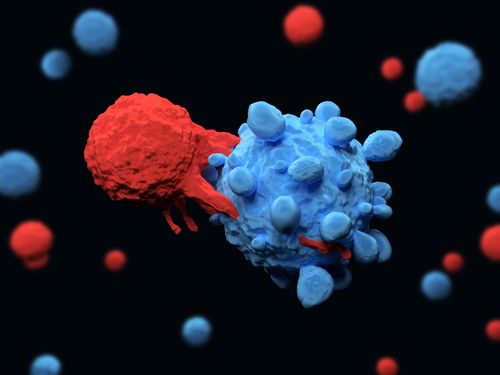Significant changes were found in the immune cell levels of children with juvenile idiopathic arthritis (JIA) following treatment with methotrexate and Humira (adalimumab), a study reports.
These findings help explain the increased risk of infection upon treatment with medicines that work in the same way as Humira, researchers said.
The study, “Peripheral Blood Lymphocyte Analysis in Oligo- and Polyarticular Juvenile Idiopathic Arthritis Patients Receiving Methotrexate or Adalimumab Therapy: A Cross-Sectional Study,” was published in the journal Pediatric Rheumatology.
Disease-modifying anti-rheumatic drugs (DMARDs) help manage JIA by reducing inflammation and preventing joint damage, slowing the progression of the disease.
These therapies work by suppressing the immune system, which can lead to infection, yet the association between JIA and the immunosuppressive infection-causing effects of recommended treatments remains unclear.
In the study, researchers at the University of Pecs, in Hungary, designed a study (NCT03833271) to investigate the effect of different JIA therapies on immune cells that play a role in immune defense.
The team focused on two treatments: methotrexate, a standard first-line DMARD, and Humira (by AbbVie), an antibody-based biologic that blocks the pro-inflammatory immune protein TNF-alpha.
The study included 25 children with oligoarthritis (OA) and 16 with polyarthritis (PA), all in remission to rule out the impact of disease activity on immune cells. Twenty-two healthy siblings also participated in the study.
A total of 15 patients (36.5%), 12 with OA and three with PA, were treated with methotrexate alone, while 26 (63.5%) were given a combination of methotrexate and Humira — 13 with OA and 13 with PA. Mean age was 7 in both groups.
The group treated with the combination therapy first started a stable dose of methotrexate for 1.92 years before adding Humira. PA patients had a significantly longer disease and treatment duration compared to OA patients.
Blood tests revealed the presence of three different types of autoantibodies in 16 participants. No significant alterations in inflammatory parameters were seen from blood tests.
Compared to healthy controls, significantly more immune T-cells containing the CD3 marker on their surface were found in patients treated with the combination therapy. These cells activate cytotoxic T-cells with the CD8 marker, which seek out and kill infected cells, as well as helper T-cells positive for the CD4 marker that help orchestrate the immune response.
Both CD4 helper and CD8 cytotoxic cells also increased in the combination therapy group compared to controls; however, it did not reach statistical significance. All other T-cell populations were unaffected.
The accumulation of these types of T-cells suggested “a more destructive disease with aggressive pro-inflammatory immune response,” and maybe the reason “why these children receive anti-TNF-alfa therapy,” the researchers wrote.
As demonstrated for the first time, the number of CD56-positive natural killer (NK) cells, which have a similar function to cytotoxic T-cells, were decreased significantly in the methotrexate-Humira group than in the controls. This result might explain “the increased number of mild, viral, upper respiratory tract infections demonstrated in various trials” of anti-TNF therapies, the scientists wrote.
Children who received methotrexate had significantly fewer B-cells with the CD19 marker than the group on combination therapy. B-cells are immune cells that produce antibodies and autoantibodies. Yet, blood levels of antibodies were in the normal range.
“This is the first study that demonstrates significant alterations in the number of B-cells and T-cells with a relative decrease of NK-cell ratios in JIA patients receiving different DMARD therapy,” the investigators wrote.
“We have to emphasize that [Humira]’s therapeutic effect largely overgrows its adverse effects,” they added. Methotrexate is “a good choice of therapy concerning the cost-benefit ratio.”
For the future, the team said it is important to analyze the change in cell levels over time and in patients off medication.

